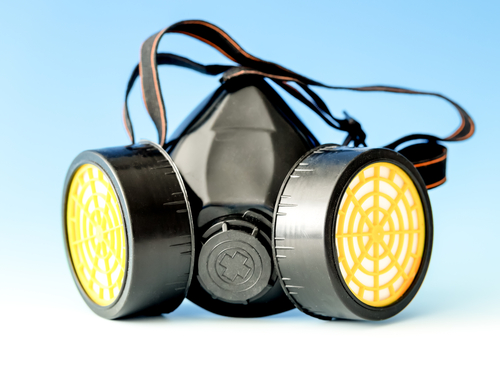Respirators can be real lifesavers. A firefighter inside a building filled with toxic smoke breathes clean air because of his respirator, as does a painter inside a spray booth. But for workers with underlying heart or lung issues, a respirator can place a dangerous amount of stress on the body. That’s why OSHA’s respiratory protection standard, 29 CFR 1910.134(e), requires employees to be medically evaluated before they can wear a respirator on the job.

Today, we will look at the medical evaluation process. Tomorrow, we will find out what you can expect from the medical evaluator’s report and when reevaluations are required.
The Evaluation Process
Before a worker wears a respirator at work, even before the worker is fit-tested, he or she must be evaluated to ensure that the respirator will not place an excessive burden on the worker’s body.
Your one-stop safety management resource, available 24/7. Go here to take a no-cost site tour or here to try it in your own office!
The medical evaluation must be performed by a “physician or other licensed healthcare professional” (PLHCP); typically, a physician or a nurse acting under a physician’s supervision fills this role. The medical professional will make use of information provided by the employee and the employer. It is a stepwise process that begins with information gathering:
- Workers can either complete the questionnaire found in Appendix C of 1910.134, or the medical professional evaluating the worker can collect this information in an interview. If you need a copy of the questionnaire in Spanish, it’s available here: www.osha.gov/SLTC/respiratoryprotection/medicalevaluation_sp.html
- Employers must provide the medical professional with sufficient information to determine the employee’s fitness, including some information about the workplace, job tasks, and equipment to be used. The employer must make sure that the evaluating medical professional knows:
- The type and weight of the respirator to be used by the employee,
- The duration and frequency of respirator use (including use for rescue and escape),
- The expected physical work effort,
- Additional protective clothing and equipment to be worn, and
- Temperature and humidity extremes that may be encountered.
The employer must also give the PLHCP a copy of both the employer’s written respiratory protection program and the respiratory protection standard.
If the information-gathering portion of the evaluation reveals any concerns, the employee must complete a follow-up medical evaluation. This will include any medical tests, consultations, or diagnostic procedures that the medical professional considers necessary to determine whether the worker can wear a respirator.
Great news! BLR’s renowned Safety.BLR.com® website now has even more time-saving features. Take our no-cost site tour! Or better yet, try it at no cost or obligation for a full 2 weeks.
The entire process—the questionnaire and the medical exam—must be kept confidential and take place during the employee’s normal work hours or at a time and place convenient to the employee. The employer must also ensure that the worker understands the questionnaire well enough to answer the questions correctly. After the evaluation is completed, the employee must be given a chance to discuss the questionnaire and the results of the physical exam with the medical professional.
Tomorrow, we’ll find out what you can expect from the medical evaluator’s report.
